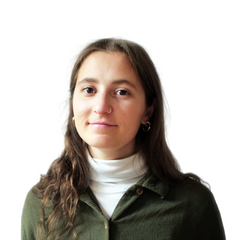How the German Easter Bunny tradition hopped across the world
Nose twitching, cotton tail wiggling and foil-wrapped treats in tow, who can resist the annual arrival of the Easter Bunny? Without Germany’s Osterhase tradition, all we’d be left to celebrate with is Jesus and Spargel. Here's a look at the German origins of the Easter Bunny.
Where did the Easter Bunny tradition originate?
The Osterhase symbolises everything that makes Easter one of the best public holidays: chocolate and the divine permission to eat too much of it. And while the colourful eggs we hunt for are part of an ancient tradition, the soft-footed being that leaves them behind was first a figment of the early modern German imagination.
A short history of the German Osterhase (Easter Bunny)
Based on neolithic burial traditions, archaeologists believe that the brown hare has long been associated with rebirth, a central part of the Easter story in Christianity which has been celebrated since the second century.
While the Easter tradition of painting eggs had arrived by the 13th century, it wasn’t until the 17th century that English and German folklore brought eggs and the brown hare together as festive symbols of rebirth and resurrection.
The first known record of this partnership can be found in the work of Johannes Richier, a doctor from Frankfurt. In his doctoral dissertation, titled “De ovis paschalibus - von Oster-Eyern”, Richier describes a tradition originating in Rhineland-Palatinate and Alsace, where children would hunt for Easter eggs “laid” in the bushes by a rabbit, or at least that is the “fable that is told to the naive and children”.
In another origin tale, detailed in Lillah Farmer’s book Rabbits in Children's Books, an impoverished German woman is said to have dyed eggs and hid them for her children to find. According to Farmer, “Just as they found them, a rabbit hopped away, leaving the belief that the rabbit has left the eggs”.
Image credit: WildlifeWorld / Shutterstock.com
The Easter Bunny tradition spreads overseas
A child’s determination for chocolate can melt logic to fill the gaps of any narrative inconsistency, a determination which solidified the Easter bunny and egg hunting tradition outside of the federal republic.
While children in Germany had been hunting for eggs left by the Osterhase at least since Richier published his dissertation in 1682, it wasn’t until the 18th century that such silliness would hop across the pond with the Pennsylvania Dutch. Leaving Rhineland-Palatinate behind, the Pennsilfaanisch Deitsch allowed the “Oschter Haws” tradition to make leaps and bounds in the United States. By 1878 the Easter Bunny had been given a central role in the White House’s annual Easter Egg Roll.
While the Pennsylvania Dutch are credited with bringing the Easter Bunny lore across the pond, just like with the Christmas tree and flushing toilet, it was Queen Victoria who introduced the tradition to Britain and imposed it on her colonies. À la her German mother, Princess Victoria of Saxe-Coburg-Saalfeld, Victoria and her German cousin-cum-husband Prince Albert began organising egg hunts at Kensington Palace in the 1840s.
Osterhase, Oschter Haws, Osterhaws, Ēostre: The Easter Bunny’s many names
Since it has spread across the world, the Easter Bunny has been granted many new names. Starting from the very beginning, the words Easter and Ostern are thought to derive from “Ēostre”, the name of the Western Germanic goddess of spring, who is often depicted in the company of a hare.
Ēostre and the word for rabbit in German, or more specifically for “hare” gives us the Osterhase we know in Germany today, the “Osterhaws” transported by the Pennsylvania Dutch and the “Easter Bunny” that would eventually be known worldwide.
Thumb image credit: Victorian Traditions / Shutterstock.com



COMMENTS
Leave a comment